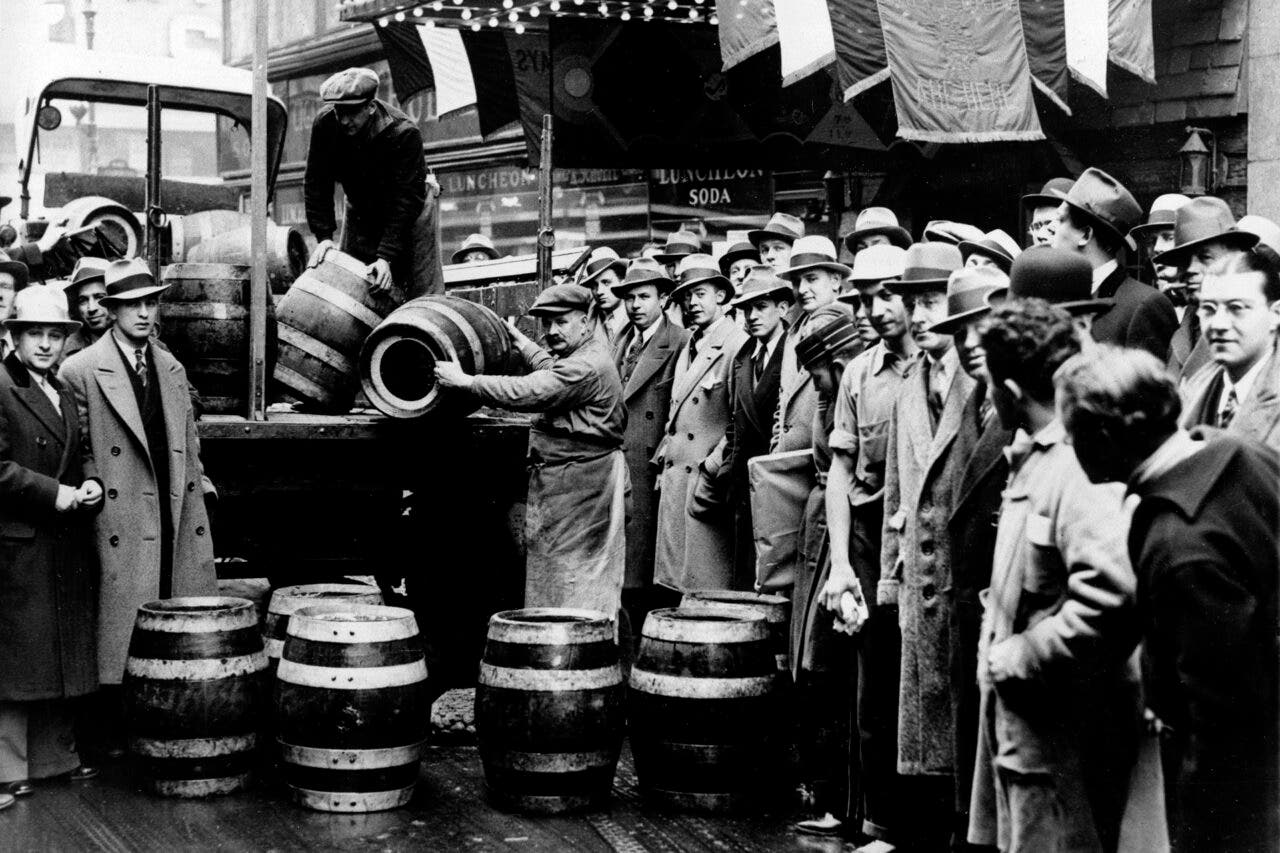At the stroke of midnight on January 16, 1920, Prohibition went into effect. The so-called “Noble Experiment” outlawed the production, importation, transportation and sales of “intoxicating liquors” for almost 14 years, until its repeal on December 5, 1933.
A century later, we’re still feeling the ban’s effects. We romanticize its moment in history in modern bars with faux “speakeasies,” wink-wink “bathtub gin” and “moonshine,” but the 18th Amendment resulted in real and long-lasting changes to America’s drinking culture.
The first and most significant shift has been its effect on state laws. After 1933, regulating alcohol became a state rather than federal issue, resulting in a patchwork of rules that, despite evolving over time, remain completely inconsistent across the country.
Some states created “dry counties” or codified blue laws that restrict alcohol sales at stores or restaurants during certain hours (if you’ve been denied a Mimosa at an early-ish Sunday brunch, this is likely why).
Varying laws also make online liquor sales challenging, since many states don’t allow such shipments.
Beyond legal red tape is the more practical topic of industry development. During Prohibition, distilleries were forced to shutter their operations, many bartenders left the U.S. to practice their craft elsewhere and cooperages saw demand for barrels fall so sharply that the local workforce and know-how diminished significantly.
It took decades to recoup that expertise.

Thankfully, today, there are around 2,000 distilleries across America, according to the Craft Spirits Data Project. Happily, every U.S. state is now home to at least one working distillery.
Prohibition’s effects don’t end there. That specific request for a “Grey Goose Martini” or a “Jack & Coke” has roots in the era, according to Last Call: The Rise and Fall of Prohibition, by Daniel Okrent.
To avoid unsafe rotgut alcohol, it became common in speakeasies to ask for a specific brand, a practice that was practically unheard of during the saloon years. Okrent notes that some now well-known brands, including Dewar’s, Haig & Haig and Cutty Sark, were brought in by bootleggers for this purpose.
The luxury cruise business also owes a debt to Prohibition, when thirsty, well-heeled Americans would board brief “booze cruises” that sailed just beyond U.S. territorial waters to taste the good stuff. This also includes longer voyages to rum-producing destinations like Cuba or the Caribbean, and transatlantic journeys to Europe.
When it comes to parties, a clause in the Volstead Act legitimized alcoholic beverages already stored in individual residences prior to Prohibition. This ultimately moved drinking into private homes and clubs, giving rise to the cocktail party, now a staple of home entertaining.
Whether you view these changes as good, bad or merely inconvenient, what’s most important is that a century later, the industry has survived and even thrived—and that’s a milestone worth celebrating.
Last Updated: May 8, 2023















